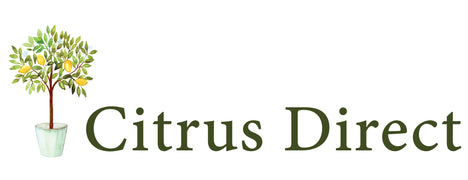How to Attract Beneficial Insects to your Citrus Trees
Jun 01, 2025
Companion planting is a vital part of organic pest management.
In New Zealand homes, companion planting is often used in vegetable gardens to attract beneficial insects, but it’s still uncommon around citrus trees. We encourage you to give companion planting a go—it’s simple, effective, and brings nature into balance.
Citrus trees are vulnerable to “bad” insects that can do serious damage. A natural way to control these pests is by inviting beneficial insects into the garden. By planting specific companion plants, you provide food and shelter for these allies, encouraging them to stick around and keep the pests at bay.
Citrus pests locate trees by scent and shape. By sowing other species nearby, you can confuse or deter these invaders. Meanwhile, certain plants act as magnets for good insects. Adult beneficials feed on nectar and pollen, so planting flowers that bloom at different times ensures a steady food source. This encourages them to settle in, reproduce, and do the hard work for you.
What Commercial Growers Are Doing
Organisations like A Lighter Touch and Citrus New Zealand offer guidance to orchards on reducing non-organic sprays and fertilisers. They advocate replacing grass between citrus rows with cover crops of companion plants. Many citrus growers have embraced this, sowing hardy, insect-attracting plants throughout their orchards.
These cover crops—fescues, clovers, yarrow, dandelion, plantain, marigold, buckwheat, legumes, and alyssum—not only attract insects but improve soil health. While these plants are effective, many are considered unattractive or even weeds.

Photo Above: Broadleaf plantain
We believe your garden should be a sanctuary—a place of beauty and nourishment. That’s why we promote companion plants that support your citrus while looking stunning.
Creating a Habitat for Beneficial Insects
Whether you have citrus trees in pots on a deck or growing across several hectares, you can create a haven for beneficial insects. Here’s how:
For Potted Citrus Trees
Plant white alyssum around the top edge of the pot. These shallow-rooted bloomers won’t interfere with citrus roots and offer multiple benefits:
- Smother weeds
- Smell wonderful
- Attract lacewings, hoverflies, ladybugs, and parasitic wasps
Lacewings, hoverflies, and ladybugs attack mealybugs, aphids, and mites. Parasitic wasps (tiny, non-stinging heroes) target lemon tree borer, whitefly caterpillars, and scale.
For Larger Gardens
Whether your citrus is in the ground or mixed between pots and borders:
- Sow alyssum under trees, away from trunks
- Intersperse flowering companions among the citrus
- Add companion plants to borders and nearby beds
- Let parts of your veggie garden—carrots, parsley, brassicas—go to flower
- Tuck herbs near citrus trees or within flower beds
To make this work year-round, you need blooms throughout the seasons. Planting a mix of flowering plants—known as insectaries—ensures nectar and pollen are always available, even when pest numbers are low. That keeps your insect allies well-fed and present when you need them most.
And finally: stop broad-spectrum insecticides. These chemicals can harm the good bugs just as much (if not more) than the bad ones. Let nature do the work whenever possible.
Ready to get started? Browse our handpicked plant list below or try our Citrus Beneficial Seed Mix—designed to bring balance and beauty to every citrus grower’s garden.
Top Picks for Citrus Gardens
Beautiful, practical, and bursting with insect-friendly energy—these plants support citrus tree health naturally.
| Plant Name | Seasonality | Benefits to Citrus Trees | Fun Fact / Tip |
|---|---|---|---|
| Salvia Leucantha (Mexican Bush Sage) | Year-round | Attracts bees, lacewings, hoverflies; suppresses weeds | Prune boldly—bounces back stronger! |
| White Alyssum | Year-round | Draws parasitic wasps, hoverflies, ladybugs; fragrant & weed-smothering | Self-seeds & adored by kids |
| Calendula Nova | Spring–Autumn | Pollinator magnet, improves soil health | Edible petals for a cheerful salad touch |
| Crimson Clover | Spring–Summer | Nitrogen fixer, attracts helpful insects | Lovely as a soft groundcover |
| Borage | Spring–Autumn | Attracts bees; deters tomato pests | Edible blooms taste like cucumber |
| Common White Yarrow | Spring–Autumn | Hoverflies, lacewings, ladybugs | Drought-tolerant and great for mixed beds |
| Cosmos | Spring–Autumn | Nectar source for adult beneficials | Perfect for wildflower-style borders |
| Nasturtium | Spring–Summer | Trap crop for aphids; attracts pollinators | Leaves and flowers are edible! |
| Bergamot (Bee Balm) | Summer | Bees, butterflies, hummingbirds | Minty foliage with herbal uses |
| Linaria | Spring–Autumn | Supports hoverflies and bees | Delicate wildflower with cottage charm |
| Achillea ‘Pastel Fruits’ | Spring–Autumn | Long-blooming nectar plant | Adds romantic texture to any garden |
| Anise Hyssop | Seasonal incl. winter | Bees, butterflies, pollinators | Light licorice aroma—great herbaceous accent |
| Meadowfoam | Spring | Attracts predatory insects and pollinators | Soft, frothy blooms with unique appeal |
| Phacelia (Purple Tansy) | Spring–Summer | One of the best for bees and hoverflies | Fast-growing with fern-like texture |
| Flowering Umbelliferae – Dill, Parsley, Coriander, Fennel, Celery, Queen Anne’s Lace | Spring–Autumn | Nectar and pollen attract lacewings, hoverflies, parasitic wasps | Let them flower—blooms are the insect draw! |
| Flowering Brassicas – Broccoli, Mustard, Radish, Rocket | Spring–Autumn | Excellent nectar source, especially late in season | Let them bolt! Their flowers are insect gold |
| Native Bushes & Trees – Hoheria, Hebes, Olearia, Carpodetus serratus | Seasonal (varies) | Support local pollinators; add ecological and visual diversity | Great for structure and native garden layering |
| Perennials – Thyme, Marjoram, Oregano, Lemon Balm, Rudbeckia, Wallflower, Aster | Seasonal (varies) | Strong pollinator support, aromatic; year-round interest | Herbs double as culinary companions! |
Salvias & Alyssum: Our Favourite Pollinator Magnets
Salvias (Yr) Salvias—including garden varieties and culinary sage—are garden workhorses. They’re incredibly hardy, with many flowering year-round, and they're a wonderful match for citrus trees. Their fragrant foliage and vibrant blooms attract a range of pollinators like bees and butterflies, along with helpful insects such as ladybugs, hoverflies, and lacewings. Salvias also suppress weeds, making them both beautiful and practical.
We’ve planted several Salvias around our citrus trees, and the one our bees adore most is Salvia Leucantha—commonly known as Mexican Bush Sage. At our nursery, it blooms all year, and when it gets too big, we simply give it a bold haircut with the hedge trimmer. It always grows back stronger and fuller.

Photo Above: Salvia Leucantha taken in the nursery.
White Alyssum (Yr) Another of our absolute favourites is white alyssum. It’s cheerful, fragrant, and flowers all year long. Alyssum self-seeds readily, grows just about anywhere, and also helps suppress weeds. It's a hit with beneficial insects—and with kids! We often spot little ones pulling apart the tiny blossoms while playing in the garden.

Photo Above: Chinotto standard in the nursery garden.is surrounded by a mix of beneficial plants, including salvias which you can just see flowering in the right rear of the photo.




